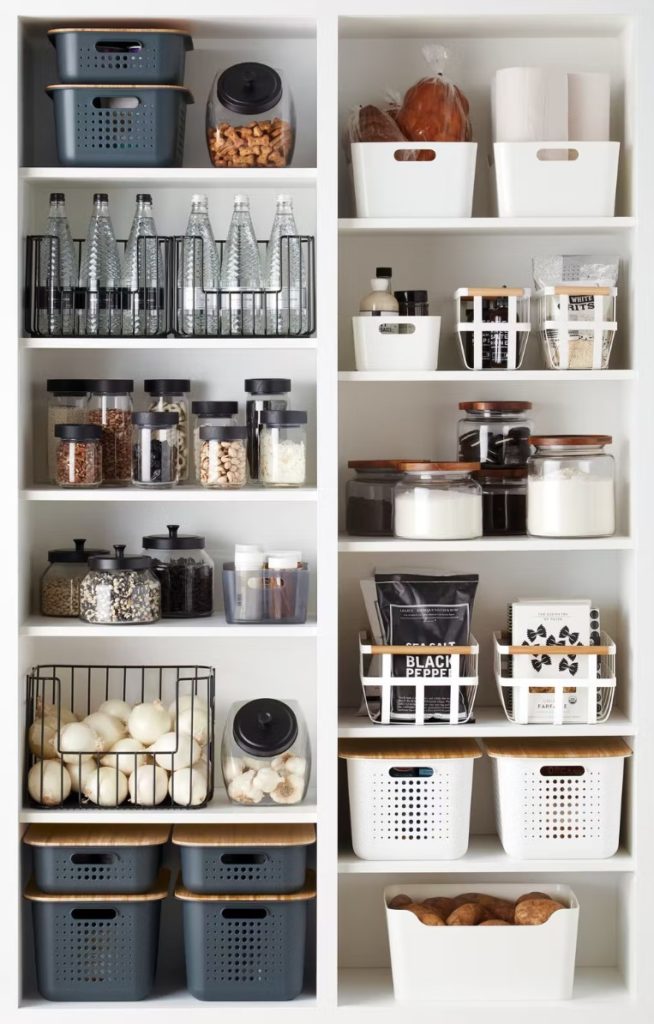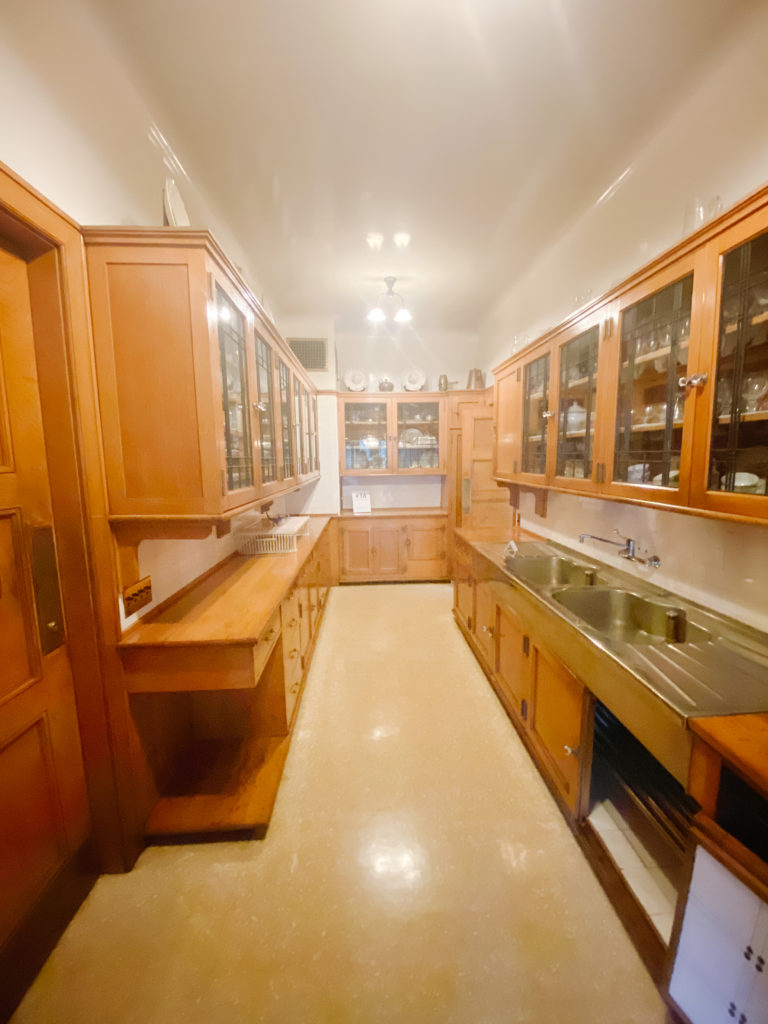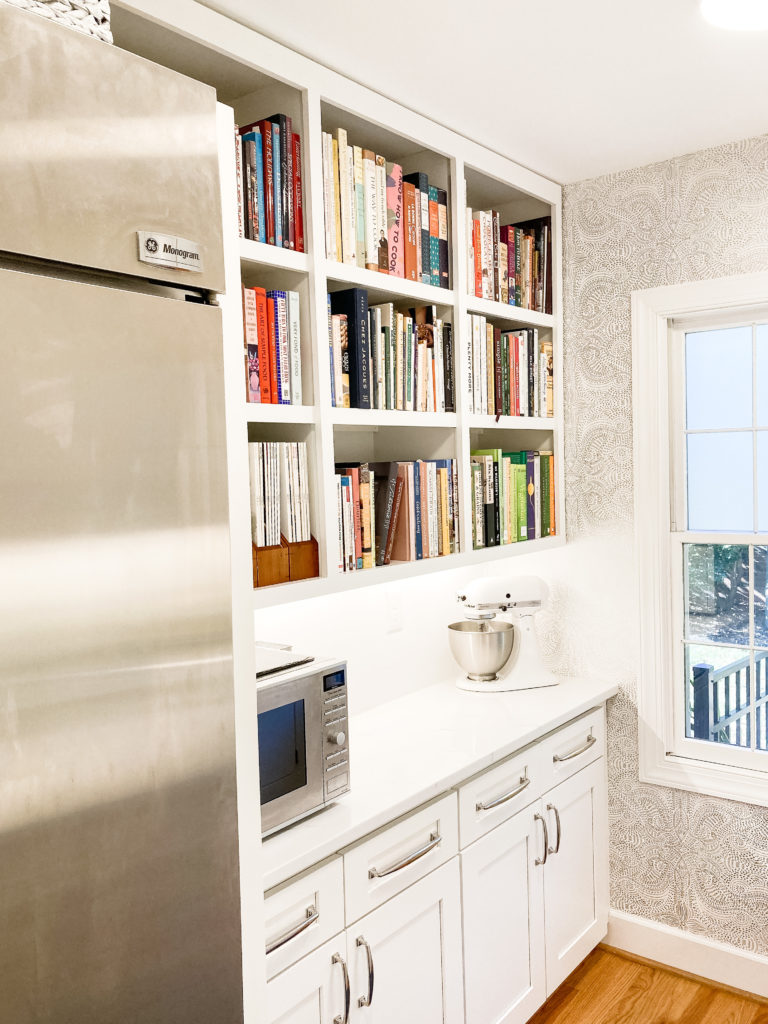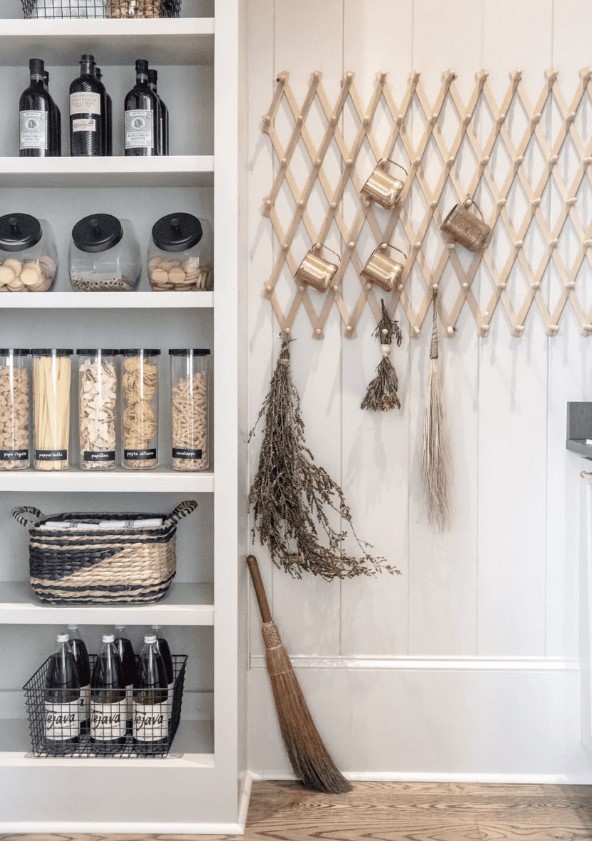A well organized and beautiful pantry is something that many people aspire to. I know I do! Amazing pantries don’t happen without careful planning and today we’re going to talk about how to do that.
Before we dive in, I’d like to take a look at the history of the pantry. Separate pantries have become increasingly popular, but did you know that they’re not a new concept? I’m a big design history-lover, so come with me to learn about the Butler’s Pantry!
History of the Pantry
At the turn of the century, the Butler’s Pantry was typically used by butlers or other household staff as a transition space between the kitchen and the dining area. This separated kitchen smells from the dining area. Some pantries contained warming ovens and iceboxes to keep foods at the ideal temperature between preparation and serving. There were also cabinets to store china, glasses, silverware, and linens.
The farmhouse pantry was a bit different in that it acted as a storehouse for the self-sufficient farmwife and was an essential component of the farm. Various storerooms, such as the cellar, also provided extended areas to keep canned goods, preserves, and all kinds of food. As dining generally took place in the farm kitchen, butler’s pantries were primarily found in urban and suburban homes except in the most up-to-date and prosperous of farm homes.
I toured the Glensheen Mansion this summer while vacationing with my family in Duluth and was intrigued by their butler’s pantry. It looks like there have been some more recent renovations, but it still gives a pretty good idea of what this room was like. A pair of 2-way swinging doors led to the kitchen (on the left) and the dining room (on the right). There is plenty of storage for glassware, dishes, and counterspace for prepared food to rest before being served in the dining room.
Post WW2, the pantry became a thing of the past. Food packaging became more popular, so families kept less food on hand and made more frequent trips to the grocery store. Less food was prepared from scratch, which led to less time in the kitchen and less storage requirements, too.
Today’s Pantry Needs
Separate Pantries have experienced a resurgence again. Kitchens have grown and become more central in our homes and we are prioritizing gathering again. Pantries have become needed again to meet the needs of hosting guests. I also think pantries have become popular again because families are busy and would rather keep good backstock than have to make frequent trips to the grocery store throughout the week. Many of us are also trying to reduce pre-packaged foods in our diets, which often requires more staple ingredients.
The sad truth about pantries is that they are a waste of space if not planned well. I’ve seen many big, empty pantries with tons of potential, but they get lost in the “shuffle” of design priorities. Having a big pantry without intentional cabinetry, shelving and storage is like a walk in closet with nothing but hang rods. Your things will be everywhere and it will be cluttered and under-utilized.
Planning your Pantry
The first thing that we need to do when planning an amazing pantry is determine how you want your pantry to function.
In the Charterplace Butler’s Pantry Project, my client wanted the pantry to be a holding space for dirty dishes during holiday gatherings and a place for the freezer and her amazing collection of cookbooks.
If you plan to primarily store food in your pantry, planning your pantry will be very different.
When designing pantries, I like to start with the biggest items first and plan where those will go. Then I move on to things like small appliances, then glass and dishware, and then smaller items like food. I also think through which items need to be at eye level or that are too heavy to go up high or down low.
Here’s a checklist to help you stay on track and cover your bases:
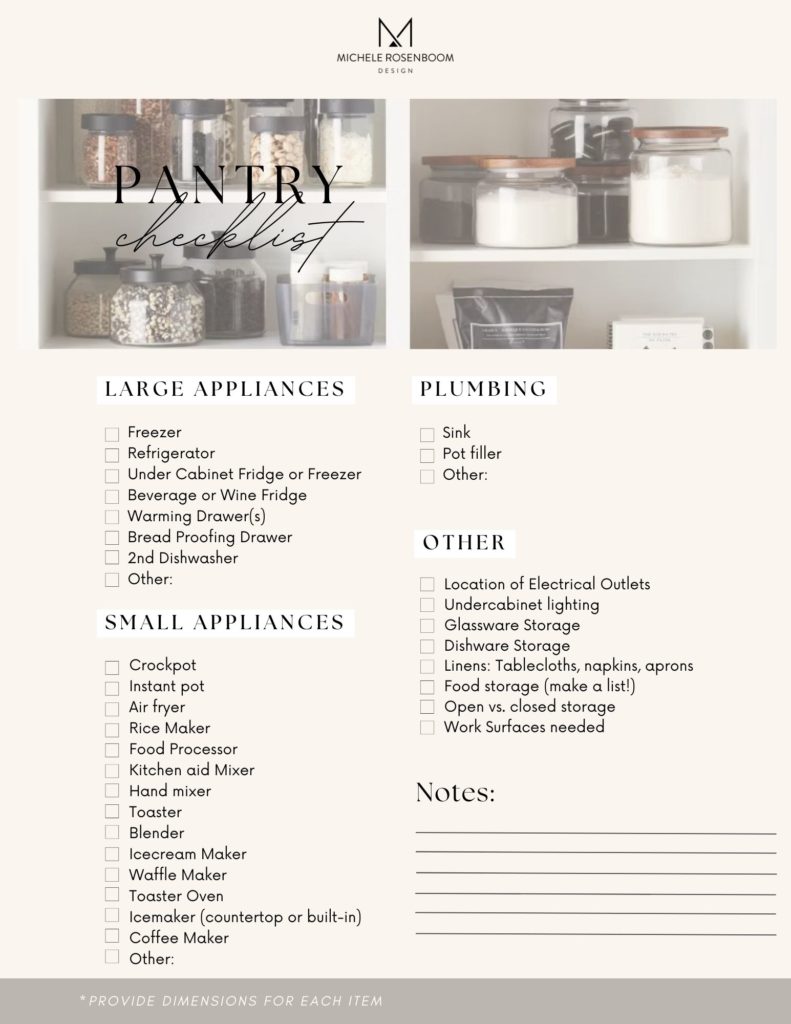
Even if you don’t have a separate walk-in pantry, simply organizing the pantry storage you already have can go a long way. I recently made over my spice drawer with the help of some new spice jars and cute labels by Paper & Pear. It was a low-difficulty project that gave me high satisfaction…my favorite kind of project! They have beautiful labels for everything in your pantry, as well!
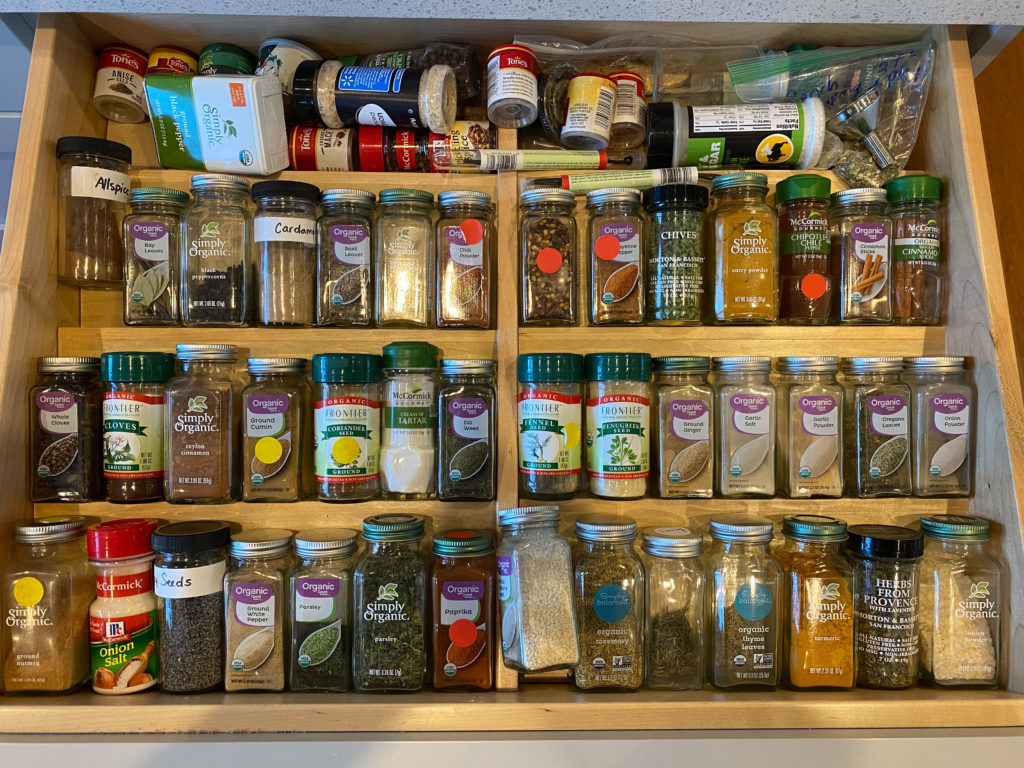
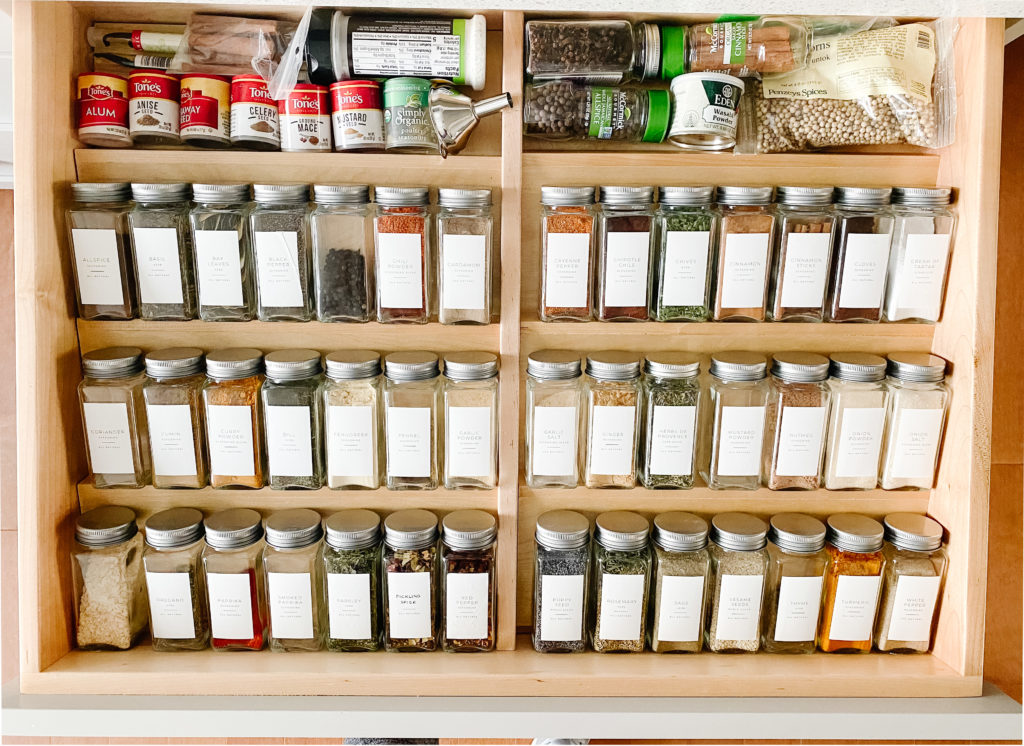
Pantry Inspiration
If you’re looking for a little inspiration for planning an amazing pantry, head on over to my Pantry Board on Pinterest. While you’re there, I’d love it if you gave me a follow!
Free Kitchen Design Guide
If you haven’t already done so yet, make sure you get your hands on my Free Kitchen Design Guide Resource! Head here to get it!

Further Reading
I ran across so many fun articles and resources while writing this. Much of the historical info I used in this post came from a book titled The Pantry: Its History and Modern Uses by Catherine Seiberling Pond.
360* Tour of the 2 story Biltmore Butler’s Pantry
The Kitchen Pantry: A Brief History
History of the Butler’s Pantry
If you’ve read all the way to the end, thank you!
I’d love to help you make your pantry dreams come true, so please get in touch with me if this is a project you’d like to tackle in the near future!
See you next month!

